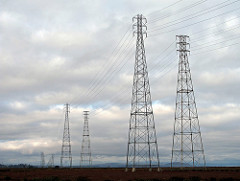 Nuclear warfare is so last century. Helping to drive home the point, as recently as March 1, 2016 the New York Times newspaper reported,
Nuclear warfare is so last century. Helping to drive home the point, as recently as March 1, 2016 the New York Times newspaper reported,
“… American investigators concluded that the attack in Ukraine on Dec. 23 may well have been the first power blackout triggered by a cyberattack …”
It’s not the first incident of cyber warfare. Nor will it be the last, as it provides the attacker some compelling advantages like virtually untraceable anonymity.
Or so says well respected investigative journalist, Ted Koppel, anchor of ABC TV’s Nightline until he left it in 2005.
Gridlock Redefined
Since then, Koppel completed a best-selling book. Released on October 27, 2015, it goes by the title of Lights Out: A Cyberattack, A Nation Unprepared, Surviving the Aftermath.
The book is chocked full of scary stuff drawn from his own observations, opinions of numerous top experts, and actual experiences.
According to him, Washington DC could be brought to its knees without a single nuclear tipped missile being fired. Any highly technologically dependent nation can be, for that matter.
 He wrote that the nuclear deterrent — mutually assured mass destruction — proved quite effective in the second half of the last century at preventing all out war between major powers. But in the 21st century, software programming methods, readily available to even rogue nations and terrorist groups, have shredded the rules of modern warfare.
He wrote that the nuclear deterrent — mutually assured mass destruction — proved quite effective in the second half of the last century at preventing all out war between major powers. But in the 21st century, software programming methods, readily available to even rogue nations and terrorist groups, have shredded the rules of modern warfare.
Three Firsts
The book stated that America was the first to detonate an atomic bomb. She, apparently aided by Israel, is also widely credited with another first – a nation to nation cyberattack. The U.S. is said to have utilized Stuxnet, a sophisticated well-placed digital worm, to damage Iran’s nuclear facilities.
Cyber warfare continues in the Middle East. On February 29th, a UK newspaper, The Guardian, stated in it’s article that,
“The Pentagon has acknowledged using its storehouse of new digital weapons to attack Islamic State communications networks, the first time that the US military has acknowledged doing so during an active war.”
Open to All
America’s friends and enemies alike wasted little time in demonstrating that they too are able to plant computer viruses, worms, trojans, and blended threats by doing just that. Much of the time these have been deliberately designed to act as a warning to their target rather than be extremely harmful.
Koppel also pointed out what world leaders already knew — zapping the power grid in places like France, Canada, or the U.S.A. means so much more than a nice revenue boost for candle makers.
 The New York Times March 1st article began by reporting the U.S. government has warned,
The New York Times March 1st article began by reporting the U.S. government has warned,
“the nation’s power companies, water suppliers, and transportation network that sophisticated cyber attack techniques used to bring down part of Ukraine’s power grid … could easily be turned on them”
Potential
The Lights Out book reminded folks that a power outage, in America, caused by a natural disaster is typically limited to part of a region. But if giant custom built one-of-a-kind power transformers across the the country are destroyed by cyberattack, don’t expect the power to be restored in days, weeks, or months.
The book also refers to a U.S. congressional commission report which chillingly estimated,
“that only one in 10 of us would survive a year into a nationwide blackout, the rest perishing from starvation, disease, or societal breakdown.”
That is if foreign troops do not invade in the meantime.
Photo Credits: Grid Segment by Steve Kocino, License: CC BY-NC-ND 2.0; Programming by Josh MacDonald, License: CC BY 2.0; Books by moleculea, License: CC BY-NC-SA 2.0